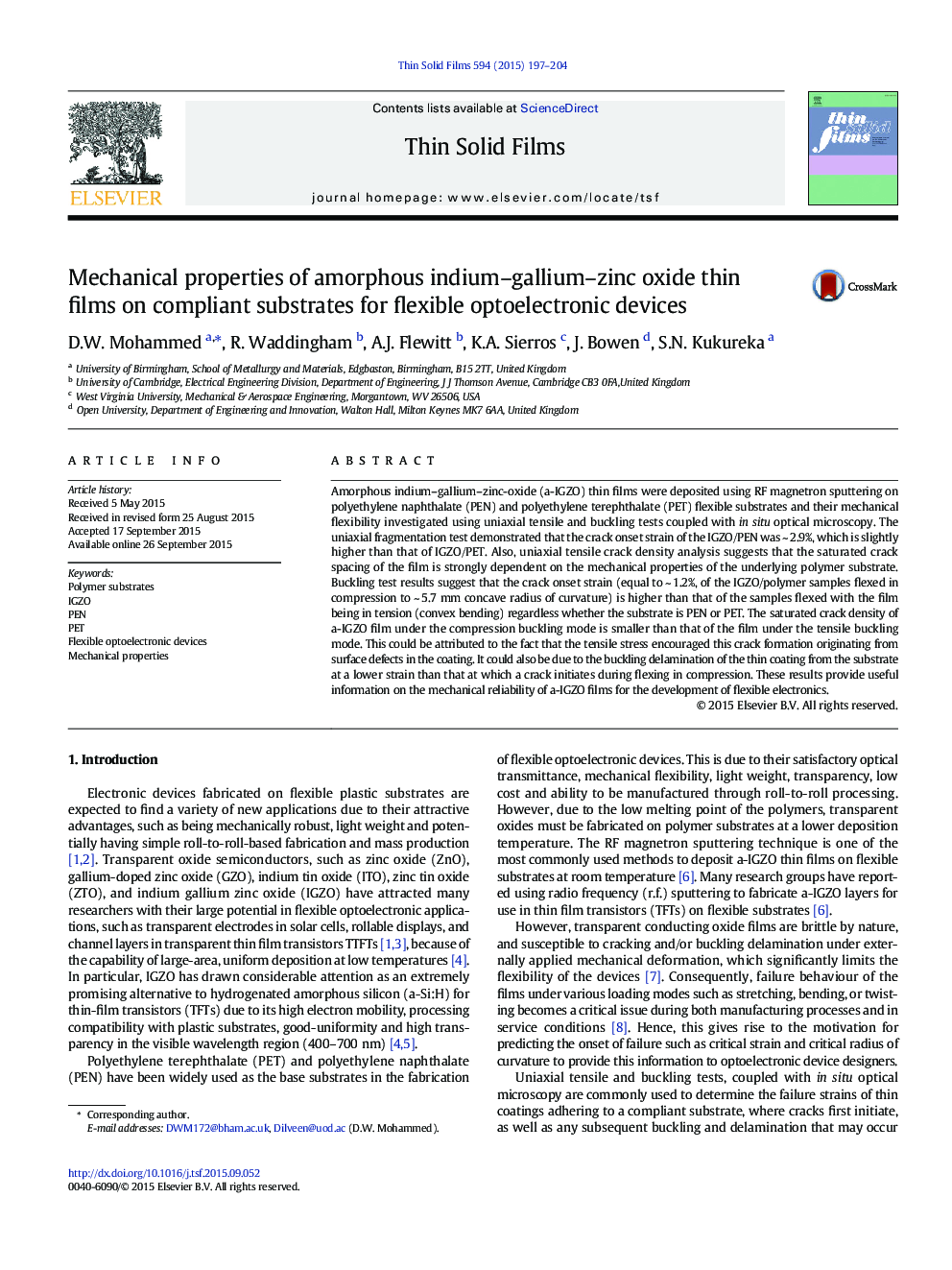| Article ID | Journal | Published Year | Pages | File Type |
|---|---|---|---|---|
| 1664487 | Thin Solid Films | 2015 | 8 Pages |
•Mechanical flexibility of IGZO thin films investigated by uniaxial tensile and buckling tests•Uniaxial fragmentation gives crack onset strain for IGZO/PEN of 2.9% (higher than for IGZO/PET.)•Saturated crack spacing strongly dependent on mechanical properties of polymer substrate•Crack onset strain in concave bending higher than in convex bending for both substrates
Amorphous indium–gallium–zinc-oxide (a-IGZO) thin films were deposited using RF magnetron sputtering on polyethylene naphthalate (PEN) and polyethylene terephthalate (PET) flexible substrates and their mechanical flexibility investigated using uniaxial tensile and buckling tests coupled with in situ optical microscopy. The uniaxial fragmentation test demonstrated that the crack onset strain of the IGZO/PEN was ~ 2.9%, which is slightly higher than that of IGZO/PET. Also, uniaxial tensile crack density analysis suggests that the saturated crack spacing of the film is strongly dependent on the mechanical properties of the underlying polymer substrate. Buckling test results suggest that the crack onset strain (equal to ~ 1.2%, of the IGZO/polymer samples flexed in compression to ~ 5.7 mm concave radius of curvature) is higher than that of the samples flexed with the film being in tension (convex bending) regardless whether the substrate is PEN or PET. The saturated crack density of a-IGZO film under the compression buckling mode is smaller than that of the film under the tensile buckling mode. This could be attributed to the fact that the tensile stress encouraged this crack formation originating from surface defects in the coating. It could also be due to the buckling delamination of the thin coating from the substrate at a lower strain than that at which a crack initiates during flexing in compression. These results provide useful information on the mechanical reliability of a-IGZO films for the development of flexible electronics.
